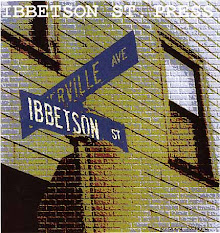Review of Mary Harpin’s poetry collection Shadowrise, Dos Madres Press, reviewed by Gregory J. Wolos
Mary Harpin, author of the excellent
new poetry collection, Shadowrise won my heart through her treatment of birds.
As a devotee of poetry since hearing my first nursery rhymes, I’ve long been
aware of the importance of birds to the concept and history of poems. While
other animals struggle for attention (such as Robert Burns’s mouse and louse,
the tortoises of D. H. Lawrence, and Maxine Kumin’s gassed woodchucks), it is
the bird that is without question the go-to favorite creature among poets.
Where would we be without Shelley’s “blithe” skylark, Keats’s hypnotic
nightingale (“Do I wake or do I sleep?”), Coleridge’s Ancient Mariner’s bad-omen
albatross, Hopkins’s “dapple-dawn drawn Falcon,” Dickinson’s “side-wise”
hopping friend, and Stevens’s thirteen ways of looking at a blackbird”?
The thematic attractions of birds in
poetry are obvious: birds inhabit the air, experiencing reality in ways we can
rhapsodize about but never fully understand; they sing transducing songs; they
force our attention upward, off of the earth into the heavens. But isn’t
reliance upon our feathered, flapping friends a bit too easy? Too often the
traditions of “bird poems” inhibit originality: the mere mention of birds flying
or singing or nesting might seem sufficient to convey a satisfactory poetic
experience. Mary Harpin’s subversive treatment of birds in Shadowrise provides an antidote to such a misconception. Her bird
poems fracture expectations and create new ways to see a familiar world. As
such, they not only lead us to the kind of experience originally sought by the
canonical composers of bird poems, but also teach us how to appreciate the art
and wisdom of the “non-bird” poetry in her collection.
Let’s begin with the simplest
example: In “Haiku,” the first line of Harpin’s poem is “Cliché, poem with
crane.” Harpin knows what she’s about. The haiku is a Japanese poetic form, and
cranes are associated with Japanese art and literature. But having established
that “crane” poems are so common as to be clichés, Harpin attacks the reader’s
expectation with the “But” beginning the second line, which draws our attention
to the bird’s “murderous beak,” and finally to “Her/Bridal Veil, tattered.” The
violence of the concluding image, contrasting with the positive associations
often connected with things “bridal” jolts with its hidden back story in much
the same way as the “shortest” story attributed to Hemingway (“For sale: baby
shoes, never worn”)
The title of another of Harpin’s bird
poems gives away the poet’s subversive intent: “Must We Pen Another Poem with
Birds?” The bird in this poem is a stunned sparrow, which was unceremoniously
“whapped” by a car windshield. The poet struggles to create a narrative for
this bird, at first searching for a better name then just “sparrow”: “Let’s use
the word flycatcher,” and later “Let’s call her/ swamp sparrow, or clay,
and say she’d/ come in from the orchard.” The bird was handed her by a
colleague who “didn’t know what to do with her and/ handed his problem to the
first woman he saw.” Eventually, the “trapped creature” in the narrator’s hands
recovers enough to speed “as far away from the corporate park as she could
get.” “She flew South./ Yes, let’s agree on south,” the poet concludes, having
shaped a story for the bird: “A smart bird doesn’t look back,” Harpin writes,
true not just for birds, but for all who have suffered a traumatic experience.
Harpin reveals her technical skill
and inventiveness in another bird poem, “A finch leaps from a window box,” in
which she leaves blanks among the lines, inviting the reader to choose the word
or phrase that will dictate one of several possible directions the poem might
take. The poem increases in intimacy all the way through to its final stanza,
in which a child hugs her pregnant mother, asking her questions, always
answered in the affirmative:“If we hug, does that mean/ I’m also hugging her?/
Yes./ Do you think she knows me, Mama? Do/ you think she wants to know her
sister?”
What is beautiful in the poems of
Harpin is the honesty and simplicity of images that depart from cliché while
imparting truths about life, death, and love. There are poems in Shadowrise about impending birth and
motherhood, such as “Geophagy,” which describes how the narrator’s sister
collects soil “from the riverbed in the town of our childhood,” to feed the narrator,
who “who ache[s] with early labor,” the miracle being that the sister is
somehow “teleported from a thousand miles away” to offer spoonfuls of the dirt:
“This will help you, she says,/“Open up.” The complex miracle of parenthood is
captured in “Walk with Sobbing Toddler on the Longest Day of the Year,” which
contrasts the abstract wonder of a child’s existence: “Incarntation: a
contradiction, an/ imploding star in reverse—/ stellar and brilliant.
Sometimes/ white with fire” with the daily struggles and joys a mother
encounters. After being told “You are the/
meanest mommy of all the/ mommies I have ever had,” the child, when asked
to tell a story, begins “Before I came
here/ I was a really old lady/ and daddy was a little boy/ . . . He always/
picked me the tastiest apples.” In “Quiddam Woman” the narrator
contemplates her complex identity as a mother. “Am I the/ porcupine mother from
my child’s book?/ . . . I may be the witch in the cookie house/ . . . Perhaps
the stepmother, horrid and gorgeous . . ./ I could be the dead mother expired
before the/ story starts . . ./ the one who hears at a bar,/ She doesn’t look like a mother.” But
when she directs her child’s attention to the pink clouds, “For a minute, I’m
the mother who is/ magical.” And though the experience is momentary, and the
“sun has vanished,/ [t]he pink clouds returned to gray,” by poem’s end the
potential for beauty is revealed as something that is always imminent.
Harpin portrays Death and the
absence it creates as memories collected in a series of images that bring one
to a kind of transcendence, as in “Gifts as You Leave this Shimmering Planet,” which
progresses from the concrete to the spiritual: “Here is the cactus, golden
flowers next to a thousand/ fine needles. Here is a cup of gelato made from its/
fruit . . . There is the memory of you diving in, diamonds rolling/ into the
water. Here I am, waiting for a sign from you, anything.” Eventually, the
narrator asks the departed to share a memory of a foal “searching for his
creator.” In “Transubstantiation After Aneurysm,” Harpin describes, “From then
on, you were the/ clink of the chalice on the chain, the puff of flour on the/
cutting board, an albescent flag iris rising from under unseasonal snow,”
contrasting these simple but vivid images with the story in the poem’s second
stanza of a farmer who described a return to life after a near death experience
as “putting on/ a pair of muddy overalls, rustling back in that old/ body
before dawn . . . chores to do.”
Through simplicity and specificity
of image, Harpin’s love poems teach the reader by example where to find
meaningful experience. In “Origin Story,” the narrator translates an
abstraction into an observation: “It is you,/ loving, that builds/ the
universe, you,/ looking at me/ this morning, as/ profoundly common as every
morning/ for twelve years, you, not looking away/ because you’re listening/ to
me talk, you, stirring cinnamon/ into foam with our fingertip.” In “It Comes to
Rest,” a series of familiar yet evocative images portray the comforts and
security possible in domestic life as another day draws to a close. Father,
mother, and children drowse after baths, books are left “half-read,” drinks
unfinished, as “The dryer chimes. The click of/ zippers and buttons stops./ The
last load of the day stops spinning.”
Again and again the poems of Mary
Harpin’s Shadowrise remind us that we
can achieve transcendence, wisdom, and satisfaction through the careful
observation of even the most mundane details of our lives. With open minds and
hearts we can be transported even if we can’t find a clichéd bird to take
flight with our imaginations. “Nevermore.”











































